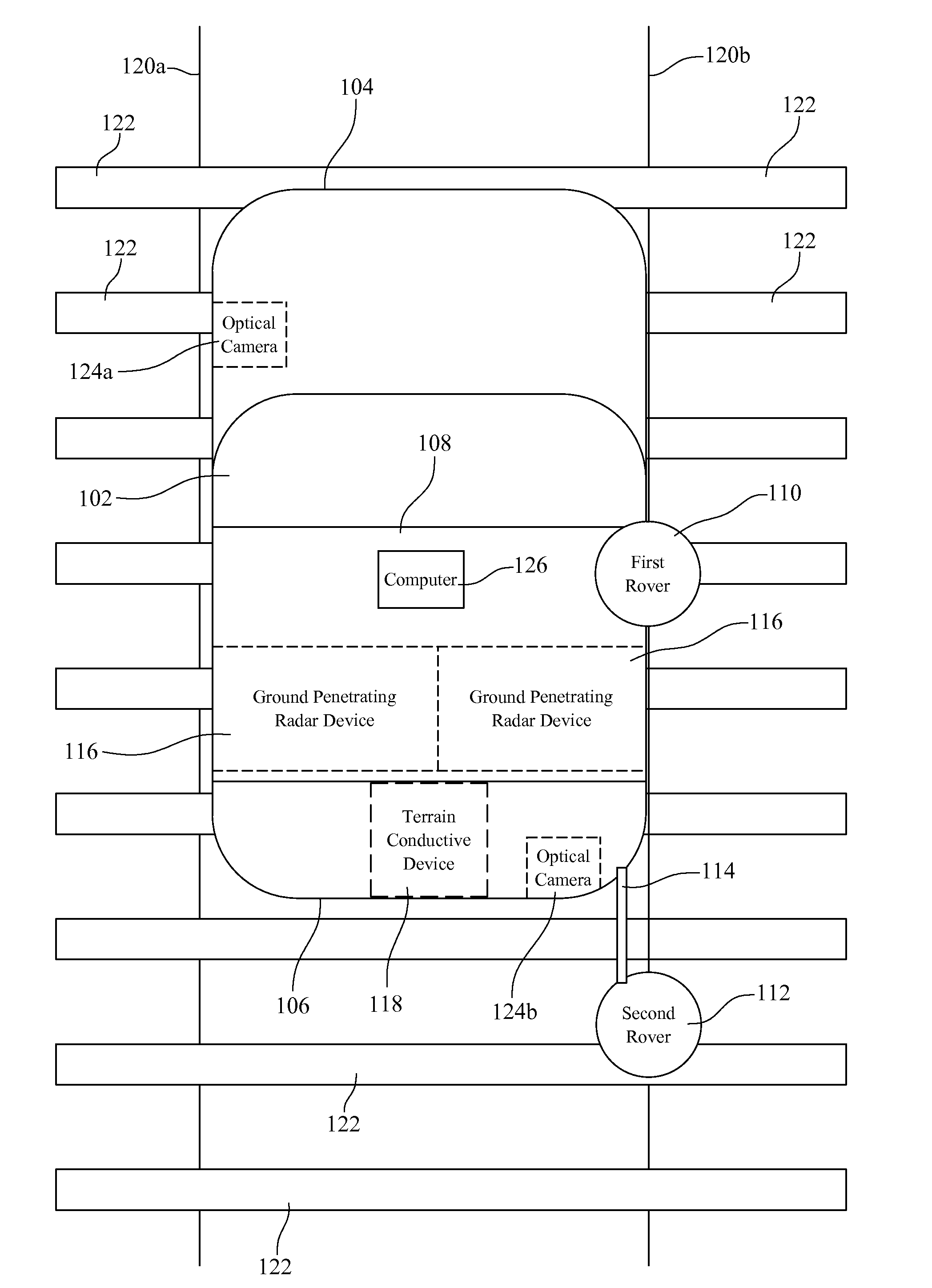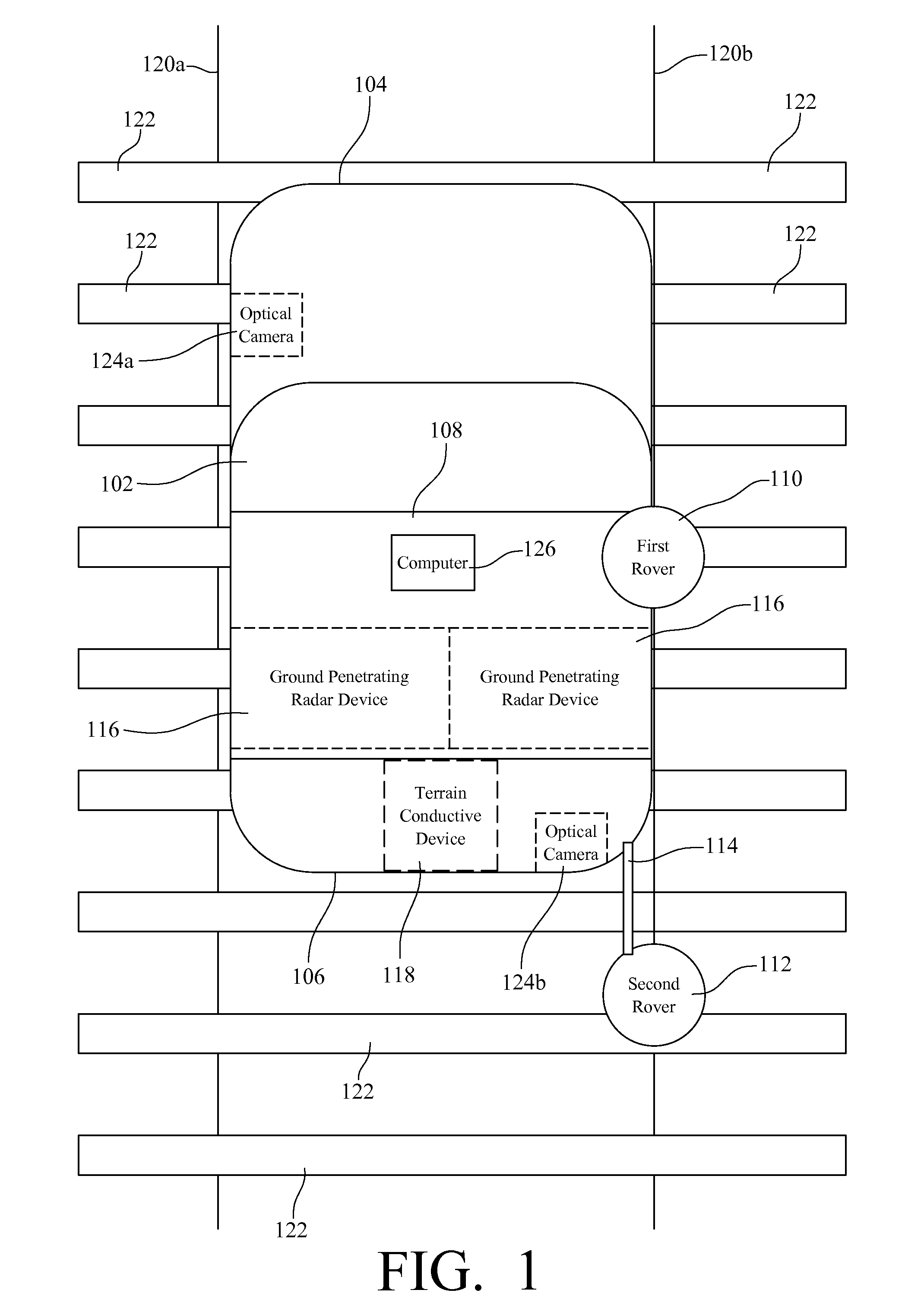Railroad surveying and monitoring system
a technology for monitoring systems and railroad tracks, applied in the direction of distance measurement, ways, instruments, etc., can solve the problems of inaccurate surveying, poor accuracy of such data, labor-intensive conventional surveying practices, etc., and achieve data flexibility, easy configuration, and easy adaptation
- Summary
- Abstract
- Description
- Claims
- Application Information
AI Technical Summary
Benefits of technology
Problems solved by technology
Method used
Image
Examples
Embodiment Construction
[0051]Preferred embodiments of the present invention herein described include an apparatus and method for multi-sensor railroad surveying and monitoring configured on a mobile platform. In one preferred embodiment as depicted in FIG. 1, is a mobile platform 102 having a roof rack 108. The front 104 and the rear 106 of the platform 102 are identified for convenience. A first rover 110 and a second rover 112 are attached to the platform 102 and in communication with a computer 126. In the preferred embodiment the computer 126 is attached to the mobile platform 102. The first rover 110 and the second rover 112 are positioned and aligned over the same track rail, e.g. rail 120b. For convenience purposes only, the present invention is described as surveying rail 120b. It would be readily apparent to one skilled in the art that the present invention can be applied to any rail, such as rail 120a. Also, the present invention is described in terms of a first and second rover 110, 112 for con...
PUM
 Login to View More
Login to View More Abstract
Description
Claims
Application Information
 Login to View More
Login to View More - R&D
- Intellectual Property
- Life Sciences
- Materials
- Tech Scout
- Unparalleled Data Quality
- Higher Quality Content
- 60% Fewer Hallucinations
Browse by: Latest US Patents, China's latest patents, Technical Efficacy Thesaurus, Application Domain, Technology Topic, Popular Technical Reports.
© 2025 PatSnap. All rights reserved.Legal|Privacy policy|Modern Slavery Act Transparency Statement|Sitemap|About US| Contact US: help@patsnap.com



